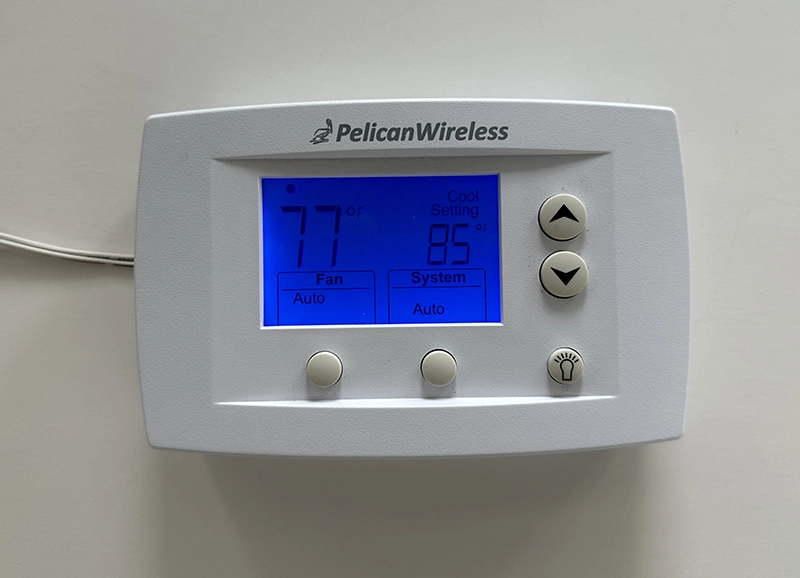
Pelican TS250H
(Evaluated by UC Berkeley) An advanced thermostat controls residential and small commercial Heating, Ventilation, and Air Conditioning (HVAC) equipment while communicating with other systems, and uses computational capability to provide advanced functionality, such as including additional sensors, the ability to group multiple thermostats, energy reports, and/or notifications.
Learn MoreIf you are experiencing issues with the comparison tool, please disable your adblocker.

Pelican TS250H
The Pelican thermostat supports up to two stages of heating and cooling for both conventional systems and heat pumps. The mobile and web interface allow grouping of zones; monitoring HVAC operation provides alerts and notifications. The Pelican has optional on-board CO2 sensors. The thermostat communicates through a proprietary wireless network.
Hub Highlights:
- On-board Carbon Dioxide sensors
- Option for humidity, economizer control
| Primary Setting | Commercial |
| User Interface Options | Web app (Pelican Connect app through web browser) |
| Multiple Thermostat Control | Group and manage multiple thermostats, shared schedules and setpoints, through web or mobile app |
| Access Restriction | Keypad lockout User management allows Admins and users Temporary schedule override allowance Limit heat/cool setpoint ranges |
| Notifications/Reports | Automated email or text message alerts when a fault is detected (high CO2, network failure, cool/heat failure, safe temperature/relative humidity range failure, utility event. History of state and runtime |
| Available Sensors | Onboard relative humidity and Carbon Dioxide sensors |
| Demand Response Capable | Can participate in Utility Demand Response programs; Open Automated Demand Response (OpenADR) capable |
Last Edited on: 07/2023
| Sample Size | 1 |
|
Thermal sensor accuracy (@68F)
|
0.1±0.4 °F |
|
Thermal sensor accuracy (@75F)
|
0.1±0.6 °F |
|
Impact of surrounding surface temperature on Thermal sensor accuracy
|
Good |
|
Standby power
|
0.64 W |
Last Edited on: 10/03/24
Data Collection
The technology evaluation team performed a heuristic evaluation of basic thermostat modes of operation (turning on, changing setpoint, reading display) for each of the tested products. In heuristic evaluations assess user interfaces according to guidelines for the design of user-friendly systems.
Sample Size
1
Estimated Usability
Good: likely good usability in most tasks; Fair: likely fair usability in most tasks.
N/A